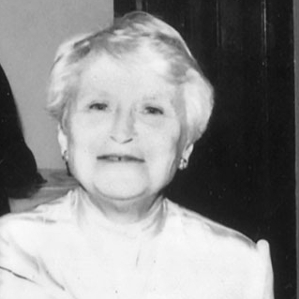
The ancient Agora of Athens is the best-known example of an ancient Greek agora, located to the northwest of the Acropolis and bounded on the south by the hill of the Areopagus and on the west by the hill known as the Agoraios Kolonos, also called Market Hill. The Agora's initial use was for a commercial, assembly, or residential gathering place.

The Stoa of Attalos was a stoa in the Agora of Athens, Greece. It was built by and named after King Attalos II of Pergamon, who ruled between 159 BC and 138 BC. The building was reconstructed from 1952 to 1956 by the American School of Classical Studies at Athens and currently houses the Museum of the Ancient Agora.

Mabel Louise Lang was an American archaeologist and scholar of Classical Greek and Mycenaean culture.
Homer Armstrong Thompson was a Canadian classical archaeologist of the twentieth century, specializing in ancient Greece. As a fellow of the American School of Classical Studies at Athens, Thompson led the excavations of the Athenian Agora from May 25, 1931 until 1970. He was married to a fellow archaeologist, Dorothy Burr Thompson.
William Bell Dinsmoor Jr. was an American classical archaeologist and architectural historian.

Dorothy Burr Thompson was an American classical archaeologist and art historian at Bryn Mawr College and a leading authority on Hellenistic terracotta figurines.

The American School of Classical Studies at Athens (ASCSA) is one of 19 foreign archaeological institutes in Athens, Greece. It is a member of the Council of American Overseas Research Centers (CAORC). CAORC is a private not-for-profit federation of independent overseas research centers that promote advanced research, particularly in the humanities and social sciences, with focus on the conservation and recording of cultural heritage and the understanding and interpretation of modern societies.
Robin Grimsey Osborne, is an English historian of classical antiquity, who is particularly interested in Ancient Greece.

An unguentarium, also referred to as Balsamarium, Lacrimarium or tears vessel, is a small ceramic or glass bottle found frequently by archaeologists at Hellenistic and Roman sites, especially in cemeteries. Its most common use was probably as a container for oil, though it is also suited for storing and dispensing liquid and powdered substances. Some finds date into the early Christian era. From the 2nd to the 6th century they are more often made of blown glass rather than clay. A few examples are silver or alabaster.
Hellenic studies is an interdisciplinary scholarly field that focuses on the language, literature, history and politics of post-classical Greece. In university, a wide range of courses expose students to viewpoints that help them understand the historical and political experiences of Byzantine, Ottoman and modern Greece; the ways in which Greece has borne its several pasts and translated them into the modern era; and the era's distinguished literary and artistic traditions.
Susan Irene Rotroff is an American classical archaeologist, classicist, and academic, specialising in the art, archaeology, and pottery of Ancient Greece. She was Jarvis Thurston and Mona Van Duyn Professor in the Humanities, at Washington University in St. Louis.
Alison Frantz was an archaeological photographer and a Byzantine scholar. With degrees in Classical and Byzantine Studies, she traveled to Greece where she joined the Athenian Agora Excavations. She was the Agora's official photographer from 1939 until 1964 and is especially renowned for her photographs of Greek sculpture. As an archaeologist, she contributed to a better understanding and appreciation of the post-classical layers of the Agora excavations with publications on the Byzantine and Ottoman material.

Sara Anderson Immerwahr was an American Classical archaeologist.

Barbara Tsakirgis was an American classical archaeologist with specialization in Greek and Roman archaeology, particularly of ancient Greek houses and households. She worked in the archaeological excavation sites in Sicily and Athens for her doctoral thesis from Princeton University on the subject of Hellenistic houses at Morgantina. Her thesis was published as The Domestic Architecture of Morgantina in the Hellenistic and Roman Periods (1984). She taught at the Vanderbilt University's Department of Classical Studies and was an associate professor from 1992 to 2019.
Lucy Talcott was an American archaeologist who worked on the excavations at the Ancient Agora of Athens for over twenty years. An expert on ancient Greek painted pottery, she coauthored the definitive study of Archaic and Classical household pottery.
Jenifer Neils is an American classical archaeologist and since July 2017 director of the American School of Classical Studies at Athens. Formerly she was the Elsie B. Smith Professor in the Liberal Arts in the Department of Classics at Case Western Reserve University.

Annie Dunman Ure was an English archaeologist, who from 1922 to 1976 was the first Curator of the Ure Museum of Greek Archaeology. She and her husband Percy Ure conducted important excavations at Ritsona in Boeotia, Greece, making her one of the first female archaeologists to lead an excavation in Greece.
Vivian Wade-Gery (1897-1988) was a British classical archaeologist.

Edward Capps, Sr. was an American diplomat, professor of Philology, and colonel.
Stephen Gaylord Miller was a prominent American–Greek archaeologist and philhellene who devoted over three decades of his career to the excavation and promotion of the archaeological site of Ancient Nemea in the Peloponnese, Greece.









